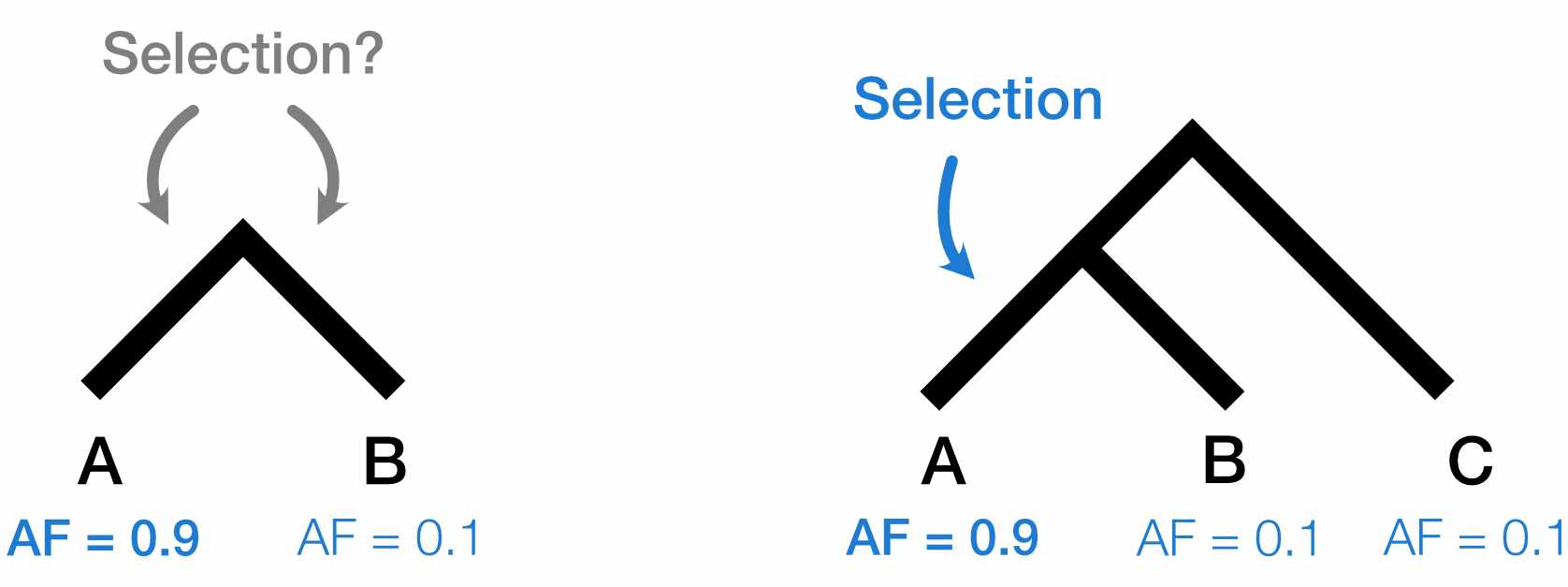9.12 Population branch statistic
\(\textrm{F}_{ST}\) and related statistics ask about allele frequency differences between two populations. If we compare sets of three populations instead of focusing on pairs, we can calculate a different statistic called the population branch statistic (PBS).
What are the advantages of comparing three populations?
Two-population comparisons tell us that an allele frequency change happened after the two populations diverged, but give us no information about when it occurred.
Comparing between three populations lets us contrast allele frequencies among the populations to localize frequency changes to a particular branch of a tree.

Fig. 6. A variant exists at different frequencies in populations A and B. By comparing to a third population, we can identify that selection likely occurred within population A.